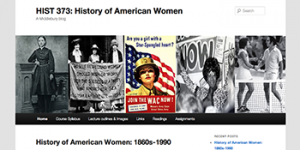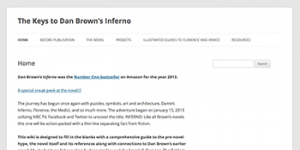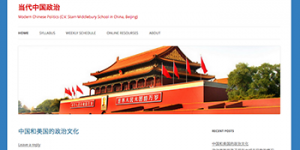Have you considered using WordPress as a course website, but aren’t sure how it might look? Are you using it already, but curious about new ideas? Here’s a sneak peek at how other Middlebury faculty have been doing it.
Simple Websites
Create a simple website with WordPress by hiding its blog features. Make “Pages” for your content (e.g., syllabus, lecture outlines, and assignment overviews), then from the Settings > Reading menu, change your blog’s front page to a “static page.”

History of American Women (login to view)
Share Course Materials and Announcements
Use WordPress’s blog “Posts” to share timely announcements with your class, and create “Pages” for static content like your syllabus, schedule, and resources that students need often.
Sharing & Publishing Student Work
Publish student work informally on the web, or give students a way to share their work with other members of the class. By elevating students’ role in your site to Contributor or higher (Users > Change Role To…), students can post to the course site themselves. WordPress’s Privacy settings give you control over whether student work is limited to just the class or beyond (Settings > Reading).

Political Ecology of GMOs
Solvitur Ambulando
Middlebury Studio Art
Digital Class Project
An entire class might collaborate to produce an archival and educational resource that lives on well after the course ends. LIS can provide extra support for ambitious projects.
Multi-Purpose
WordPress is flexible. Use it for a combination of posting course content, creating interactive opportunities for students, and as a platform to share student work.

The Keys to Dan Brown’s Inferno
No matter which approach you adopt, your WordPress site can be visible to anyone on the web, limited to Middlebury account holders, or private to just the students in your course.
To create a WordPress site for your course, visit the Course Hub > Manage Resources > Add a Resource > WordPress and follow the steps. Your LIS liaison is available to discuss ways you might use WordPress, walk you through the process, and provide additional support.


Thanks for posting these! I noticed some mention the theme and others don’t. Would be nice to know which theme each of these used.
Hi Brenda,
Modern Chinese Politics, Solvitur Ambulando, and Dan Brown’s Inferno are all using the theme “twentytwelve.”
Political Ecology of GMOs and Chicago Freedom Movement are using “yoko.”
Middlebury Studio Art is using “twentythirteen” and History of American Women is using “twentyeleven.”
Stacy